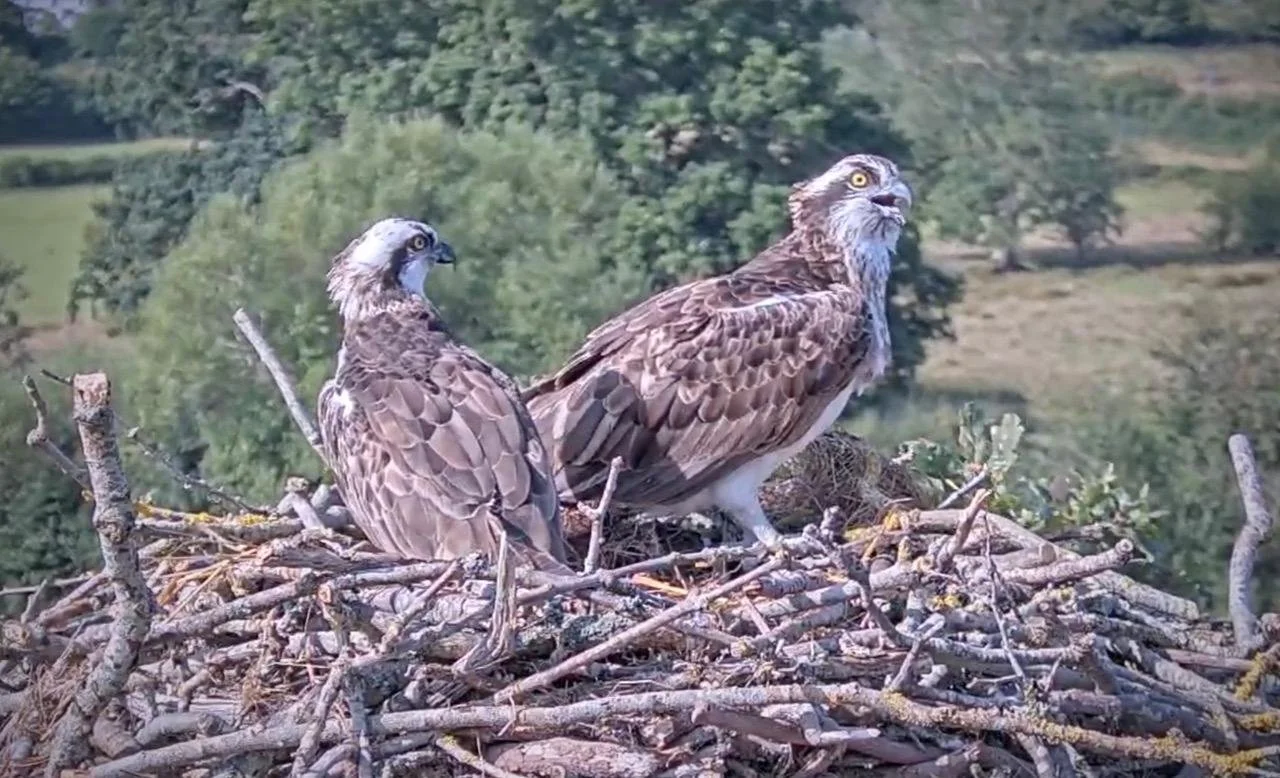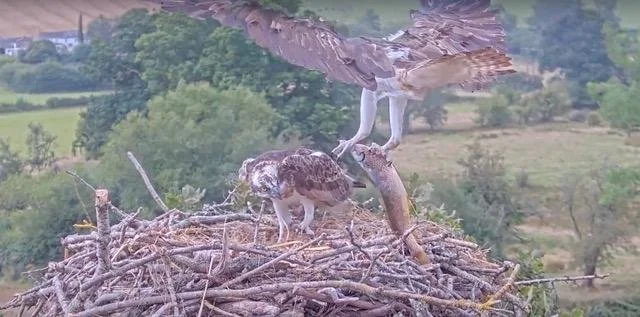KEEPING WATCHFUL EYES
As August drew to a close, a change in the weather encouraged many UK ospreys to set off south on their migration. Mostly it is the breeding females and the juveniles who have already started their journeys, while the breeding males have stayed to provide food for the last of their brood and ensure that they have departed before preparing to leave themselves. The urge to fly south is a strong one; to head for a warmer climate where fish will be plentiful and where there is no risk of the rivers and lakes freezing over.
Here in the Usk Valley we are now seeing migrant ospreys as they fly through, over and around the territory of the resident pair. But unlike earlier in the season, these visitors are showing little or no determination to stay or make a serious bid to take the nest. In fact, so far, none have landed on it. Observed from the viewpoint, there have been relatively brief and non-violent interactions.
'Our' pair - Still in residence - Male on the left, Female on the right.
However, that is not to suggest that our pair may not be concerned by these additional birds in the valley - there has been a noticeable increase in time spent on the nest, especially by the female. Why? Is this to discourage any nest visits by others, or to conserve energy and gain fitness in advance of migration, or just a more assured method by which the female can be brought food? Perhaps all of these.
The female calling for the male to bring fish
Data gathered by our Watchers this week (Wednesday - Saturday figures) shows that the female spent a total of 9 hrs 1 minute on the nest (average 2hrs/15 mins per day at 27 minutes per visit) and the male a more consistent total 2 hrs 23 minutes visiting the nest (average 36 mins per day at 5 minutes per visit) simply to deliver fish or nest materials. Peak nest occupation by the female of 3hrs 30 minutes occurred on Thursday 29th August. We know that at least FIVE ospreys were in the valley (Brecon to Llangynidr) on that afternoon suggesting that she sees these visitors as some threat to her nest and territory.
Fish deliveries are still plentiful
As of Saturday evening, both the resident pair were still present and holding their territory. The female is still extremely vocal in her food soliciting and the male, for his part, continues to provide her with a fresh catch in response to her calls. They are still maintaining their nest with the same vigour, with new materials brought in daily, though the male does the bulk of the work.
But the days are growing shorter. It cannot be too long before the urge to fly south becomes stronger than the urge to stay at their nest. Because they have not bred this year, everything has been a little different, so it will be interesting to see which of them succumbs to that most fascinating instinct first.
A reminder that you can visit the livestream by going to our “View the Birds” page - but don’t leave it too long!



